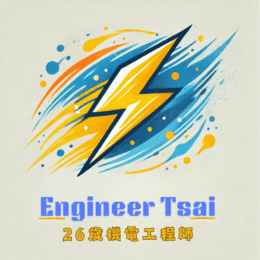▶️ Watch Now: How Does a DC Generator Work?
🔌 What Is a DC Generator?
A DC generator is a type of electrical machine that produces direct current (DC)—a flow of electric charge with a constant direction and generally stable magnitude. While its core principle is the same as that of an AC generator, both based on Faraday’s Law of Electromagnetic Induction, the key difference lies in how the output current is handled.
According to Faraday’s Law, when a conductor cuts through magnetic field lines, an electric voltage is induced. In a DC generator, however, this induced alternating voltage is converted into unidirectional current using a rectifying component—the commutator—which is the secret to its stable output.
⚙️ Structure of a DC Generator: Key Components
A typical DC generator consists of the following major parts:
🔹 Rotor (Armature)
Also known as the armature, this is the rotating part of the generator wound with coils. As it spins within the magnetic field, the coils cut across magnetic flux lines, inducing voltage.
🔹 Stator
The stationary part that provides the magnetic field. This can be either permanent magnets or electromagnets, supplying a steady and strong field to maximize induction.
🔹 Commutator
This is the most critical component of a DC generator. It’s a segmented copper ring attached to the rotor, working with brushes to convert the alternating voltage into a unidirectional output.
🔹 Brushes
Stationary carbon contacts that press against the commutator to transfer current from the rotating armature to the external circuit.
🔁 Recap: How Does Electromagnetic Induction Generate Voltage?
As the armature rotates within the magnetic field, the magnetic flux through the coil changes over time. According to Faraday’s Law, this variation induces a voltage across the coil. Without a commutator, this voltage would alternate between positive and negative—producing AC (alternating current).
However, thanks to the design of the commutator, the negative half of each cycle is flipped, resulting in a pulsating but unidirectional DC voltage. This is what enables a DC generator to provide stable power output.

🔄 The Magic of the Commutator: How AC Becomes DC
Let’s take a simple example of a single-loop rotor:
As the coil rotates, the induced voltage alternates between positive and negative, depending on the angle of rotation.
The commutator automatically switches the connection every half turn, reversing the output leads.
As a result, although the voltage still fluctuates in magnitude, its direction remains consistent.
This creates what’s known as pulsating direct current (DC). With the help of a filtering circuit—such as a capacitor—this waveform can be smoothed out for devices that require a stable voltage supply.
⚙️ Applications of DC Generators
Although modern power systems primarily use alternating current (AC), DC generators still play a vital role in specific fields:
✅ Traditional generator cars and military equipment
✅ Electroplating and electrolysis industries
✅ Powering sensitive electronic instruments
✅ Educational and laboratory use (for demonstrating Faraday’s Law and commutation)
✅ Some small wind turbines or hand-crank generators
📈 Where Does the Stability of DC Come From?
While the induced voltage still varies with the rotor’s angle, the commutator ensures a constant current direction. This produces direct current with a fixed polarity, even if the voltage amplitude fluctuates.
To achieve both stable voltage and direction, designs often include multiple coil windings, additional brushes, and filtering components.
This makes DC generators ideal for scenarios requiring consistent current direction—such as battery charging, electrochemical processes, or precise lab experiments.

🔚 Conclusion & Further Reading
While DC generators have largely been replaced by AC generators in large-scale power systems, they still play a crucial role in applications requiring stable direct current. Thanks to the clever use of commutators and brushes, they convert alternating induced voltages into unidirectional current, showcasing another fascinating application of electromagnetic induction.
📌 Further Reading
🔹 How to Generate Electricity Using an AC Generator
Explore how alternating current is generated through rotating coils and magnetic fields, producing a sinusoidal voltage output.
🔹 Faraday’s Law of Electromagnetic Induction: Simple Guide with Real-World Uses
Dive deeper into the core principle behind all types of electric generation—how motion through a magnetic field creates voltage.
🔹 Transformers and DC: Why Don’t They Work Together? (Coming Soon)
AC can be stepped up or down, but DC can’t—learn why this limitation defines the boundaries of DC generator applications.


